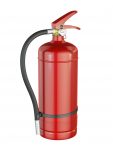Countdown to Stand-Down: Get Ready to Stand Down for Fall Prevention
From May 2–6, OSHA will hold its third annual Stand-Down to Prevent Falls in Construction. The event, which reached some 4 million employees in 2014 and 2015, most in construction, is intended to raise awareness of preventing fall hazards, which accounted for 337 of the 874 preventable construction fatalities recorded in 2014. Keep reading to […]










